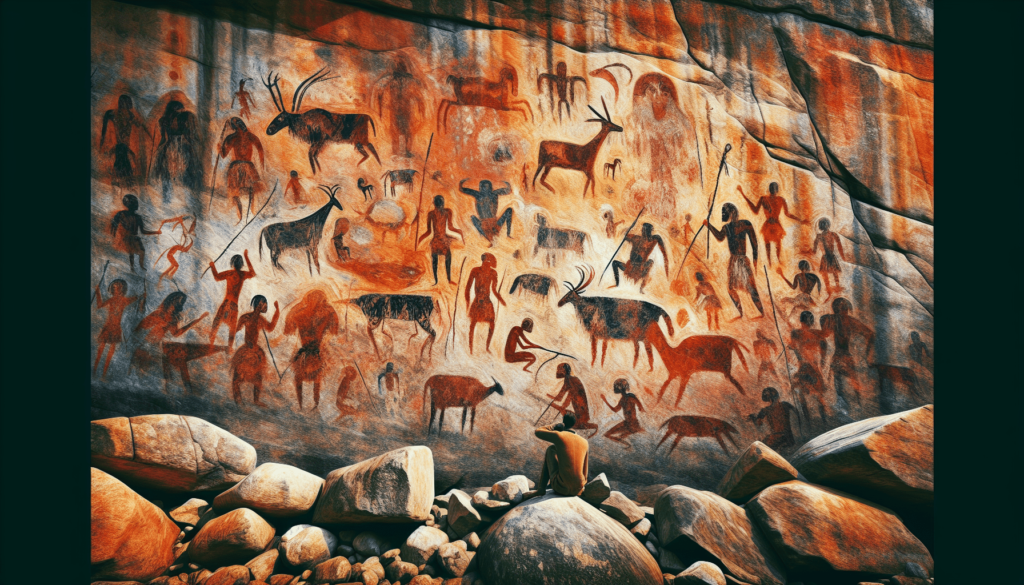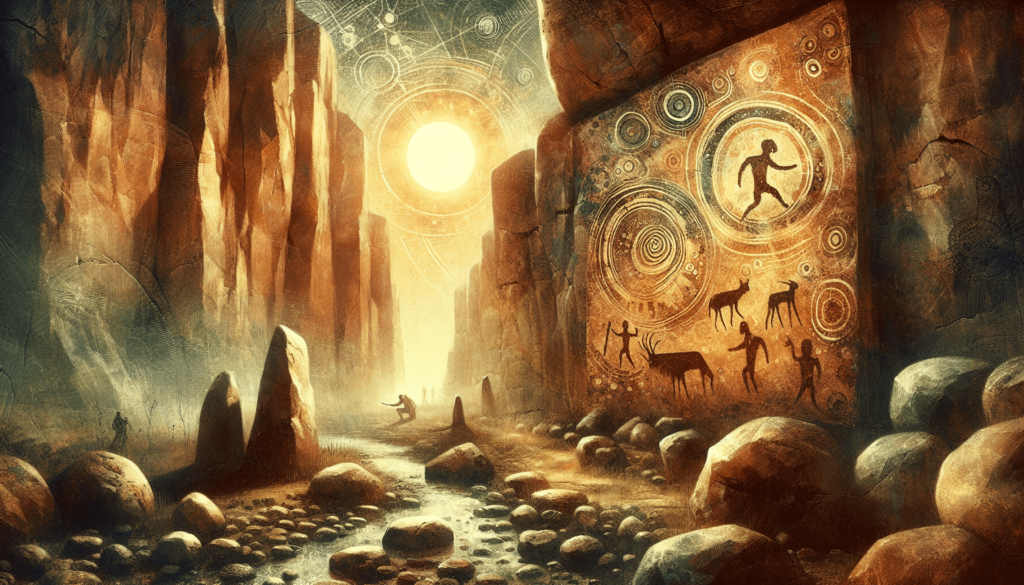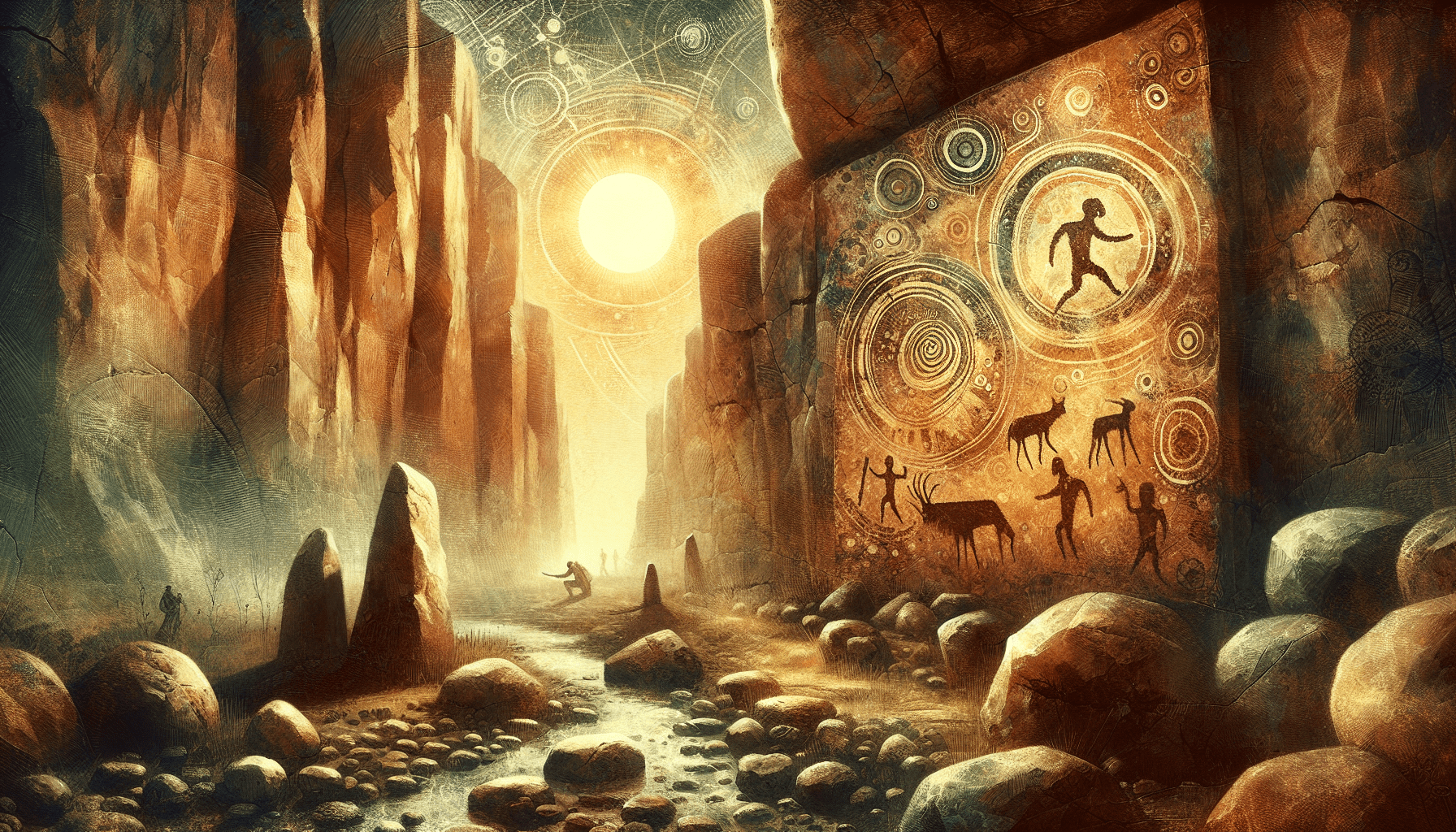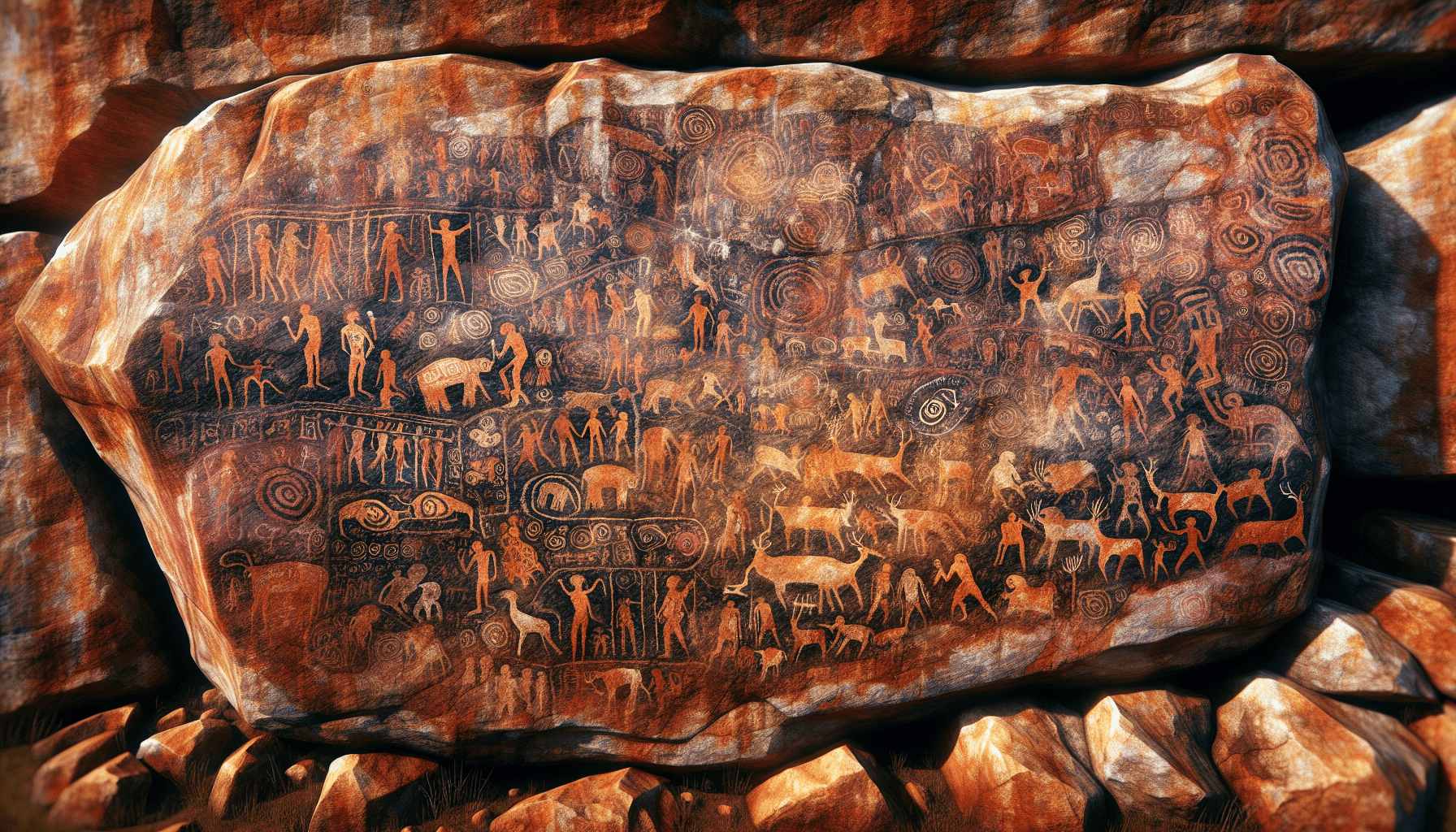When did people start painting rocks?
This question elicits curiosity and wonder about the depths of human creativity and history. The concept of rock painting, or parietal art, has fascinated historians, archaeologists, and art enthusiasts for centuries. The act of applying pigment to a stone surface transcends mere decorative or communicative functions; it offers a glimpse into the cultures, beliefs, and daily lives of our ancestors.

Early Beginnings of Rock Painting
Rock painting is one of the most ancient forms of human expression. It predates written language and provides invaluable insight into early human life. Through these painted rocks, scholars can infer aspects of the human psyche, social structures, and even early forms of spirituality.
Prehistoric Rock Art
Prehistoric rock art encompasses a broad timeline, belonging to the Paleolithic, Mesolithic, and Neolithic periods. Each of these periods contributed distinct styles and themes, reflecting the evolving human experience.
Paleolithic Era
The Paleolithic era marks the advent of rock painting around 40,000 years ago. This period saw the creation of some of the most iconic and well-preserved pieces of rock art. Sites like the Chauvet Cave in France and Altamira in Spain house astonishing examples of early human artistry.
| Site | Approximate Age | Notable Features |
|---|---|---|
| Chauvet Cave | 30,000 to 32,000 years | Detailed drawings of animals, use of red ochre |
| Altamira | 35,000 to 14,000 years | Polychrome rock paintings of bison |
These paintings typically depicted animals such as bison, horses, and mammoths, and were created using natural pigments like red ochre and charcoal. The Paleolithic artists used techniques such as engraving and contour shading to produce lifelike images.
Mesolithic Era
The Mesolithic era, dating from approximately 10,000 to 5,000 BCE, introduced more abstract and stylized forms of rock art. This period was marked by a transition from hunter-gatherer societies to more settled, agrarian communities.
| Site | Approximate Age | Notable Features |
|---|---|---|
| Bhimbetka Rock Shelters | 7,000 to 5,000 years | Geometric patterns, depiction of human figures |
In regions like the Indian subcontinent, the Mesolithic period saw rock paintings that depicted human activities such as dancing, hunting, and communal gatherings. This shift towards human-centric themes highlights the evolving social dynamics and cultural practices of the time.
Neolithic Era
The Neolithic era, spanning from 6,000 to 2,000 BCE, witnessed the advent of agriculture, permanent settlements, and complex societies. Rock paintings from this period reflect the increasing complexity of human life and belief systems.
| Site | Approximate Age | Notable Features |
|---|---|---|
| Tassili n’Ajjer | 7,000 to 1,000 years | Detailed scenes of cattle herding, symbolic motifs |
Rock art from the Neolithic period often features intricate patterns, symbols, and scenes that depict everyday life and rituals. For example, the Tassili n’Ajjer site in Algeria boasts thousands of engravings and paintings that chronicle the lives of early pastoral communities.
Cultural Significance of Rock Painting
Rock painting is not merely an artistic endeavor; it holds profound cultural significance for the communities that created them. These artworks served as a medium for storytelling, spiritual expression, and social documentation.
Storytelling and Communication
In the absence of written language, early humans used rock paintings as a means of communication. These visual narratives allowed them to record important events, convey messages, and share knowledge with future generations.
Documentation of Daily Life
Rock paintings offer a window into the day-to-day activities of prehistoric communities. Scenes depicting hunting expeditions, agricultural practices, and communal gatherings provide valuable insights into their lifestyles and social structures.
Mythology and Legends
Many rock paintings are believed to represent mythological stories and legends. These artworks often feature fantastical creatures, ancestral beings, and symbolic motifs that convey spiritual beliefs and cultural myths.
Spiritual and Ritualistic Significance
Rock paintings often held spiritual and ritualistic significance for the communities that created them. These artworks were often located in sacred spaces and were used in religious ceremonies and rituals.
Sacred Spaces
Many rock art sites are situated in locations that were considered sacred by the indigenous communities. These places were often chosen for their natural beauty, seclusion, and spiritual significance.
Ritualistic Use
Rock paintings were often created as part of religious rituals and ceremonies. The act of painting was seen as a way to communicate with the divine, seek protection, and ensure prosperity.
Techniques and Materials Used in Rock Painting
The creation of rock paintings required a combination of skill, knowledge, and creativity. Early artists used a variety of techniques and materials to bring their visions to life.
Techniques
Different techniques were employed to create rock paintings, each contributing to the unique characteristics of the artworks.
Engraving
Engraving involves incising lines into the rock surface using sharp tools. This technique was commonly used to outline figures and create detailed designs.
Painting
Painting, the most common technique, involved applying pigments to the rock surface. Early artists used brushes made from natural materials or applied the pigment directly using their fingers.
Stenciling
Stenciling involved placing a hand or object against the rock surface and blowing pigment around it to create a negative image. This technique is famously seen in hand stencils found in various caves around the world.
Materials
The choice of materials played a crucial role in the creation and preservation of rock paintings.
Pigments
Natural pigments, derived from minerals, plants, and animals, were used to create the vibrant colors seen in rock paintings. Common pigments included red ochre, white kaolin, yellow goethite, and black charcoal.
Binding Agents
Binding agents, such as animal fat, plant sap, and water, were mixed with the pigments to create a paint that would adhere to the rock surface. These agents also helped in preserving the color and integrity of the paintings.
Regional Variations in Rock Painting
Rock painting is a global phenomenon, with distinct regional styles and characteristics. Each region’s unique environmental, cultural, and historical contexts influenced the themes and techniques of their rock art.
Africa
Africa is home to some of the oldest and most diverse rock art traditions. The continent’s rich cultural heritage is reflected in the variety of styles and themes found in its rock paintings.
Southern Africa
The San people of Southern Africa created some of the most intricate and detailed rock paintings. Their artworks often depict hunting scenes, animals, and spiritual rituals.
| Site | Notable Features |
|---|---|
| Drakensberg Mountains | Detailed depictions of eland, spiritual trance scenes |
| Game Pass Shelter | Complex narrative scenes, use of multiple colors |
North Africa
In North Africa, the rock art of the Sahara Desert includes both engravings and paintings that depict animals, human figures, and elaborate geometric patterns.
| Site | Notable Features |
|---|---|
| Tassili n’Ajjer | Realistic depictions of cattle, symbolic motifs |
| Tadrart Acacus | Detailed pastoral scenes, hunting activities |
Europe
Europe boasts some of the most famous and well-preserved rock art sites, dating back to the Paleolithic era.
Western Europe
Western Europe is renowned for its cave paintings, particularly those found in France and Spain. These paintings often depict large animals and were created using sophisticated techniques.
| Site | Notable Features |
|---|---|
| Lascaux Cave | Detailed paintings of bulls, horses, use of shading and perspective |
| Altamira Cave | Polychrome bison paintings, use of natural contours of the cave walls |
Asia
Asia’s rock art showcases a wide range of styles and themes, reflecting the continent’s diverse cultural and historical contexts.
South Asia
In South Asia, rock paintings often depict human figures, animals, and scenes of daily life. These artworks provide insights into the region’s ancient cultures and traditions.
| Site | Notable Features |
|---|---|
| Bhimbetka Rock Shelters | Geometric patterns, dancing human figures |
| Edakkal Caves | Engravings of human figures, animals, and symbols |
East Asia
East Asia’s rock art includes both paintings and engravings, with themes ranging from hunting scenes to spiritual motifs.
| Site | Notable Features |
|---|---|
| Damaidi | Thousands of petroglyphs depicting human and animal figures |
| Huashan Rock Art | Large-scale paintings of human figures in ritualistic poses |

The Evolution and Preservation of Rock Painting
Over millennia, rock paintings have evolved and adapted to changing environmental and cultural conditions. The preservation of these artworks is a testament to their enduring significance and the efforts to protect our shared heritage.
Evolution of Styles and Themes
The styles and themes of rock paintings evolved as human societies developed and interacted with one another. This evolution reflects the dynamic nature of human culture and creativity.
Influences of Environmental Changes
Environmental changes, such as shifts in climate and landscape, influenced the themes and techniques of rock art. For instance, the transition from the Paleolithic to the Neolithic era saw a shift from depicting large game animals to scenes of agricultural and pastoral life.
Cultural Exchanges
Cultural exchanges between different communities also played a role in the evolution of rock art. Migration, trade, and interactions facilitated the sharing of artistic techniques and motifs, leading to the development of regional styles.
Preservation Efforts
The preservation of rock paintings is essential for protecting our cultural heritage and ensuring future generations can appreciate and learn from these ancient artworks.
Conservation Techniques
Conservation efforts involve various techniques, such as stabilizing fragile rock surfaces, removing harmful biological growth, and using protective barriers to shield the paintings from environmental damage.
Community Involvement
Engaging local communities in preservation efforts is crucial for the long-term protection of rock art sites. Indigenous and local communities often have a deep connection to these sites and can provide valuable knowledge and support for conservation initiatives.
Conclusion
The origins of rock painting date back tens of thousands of years and offer a profound insight into the lives, beliefs, and creativity of our ancestors. These ancient artworks serve as a testament to the enduring human spirit and its drive to express, communicate, and preserve its legacy. By studying and preserving rock paintings, you have the opportunity to connect with the past, enrich your understanding of human history, and contribute to the ongoing narrative of cultural heritage.



